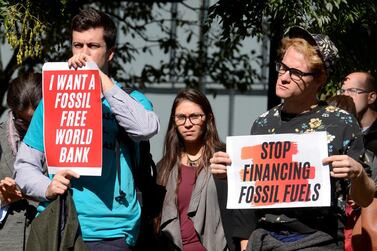In Nikola Tesla’s burial place of Belgrade, giant coils send sparks through visitors to the Serbian inventor’s museum. Pioneer of alternating current, electric motors, transformers, wireless charging, remote controlled boats and much more, he was one of the giants of the late 19th Century electric revolution. His name has inspired not just the eponymous car company, but also Nikola Motor’s battery trucks. More than a century later, the electricity business is again entering a phase of upheaval.
The period from the 1870s onwards saw an explosion in the consumer uses of electricity: arc lighting, Thomas Edison’s incandescent bulb, motors for lifts and trams, and radio.
Tesla developed polyphase alternating current (AC) and an induction motor for Westinghouse, two of the company’s key innovations in its “War of the Currents” with rival Edison in the 1890s. Edison promoted direct current, claiming it was safer because it worked at much lower voltages. But it needed much thicker wires, and could operate only over short distances because of high losses. The eventual victory of AC allowed the emergence of the modern system of large, centralised power plants transmitting high-voltage electricity over long distances, reduced by transformers to safe voltages close to the end-consumer.
Samuel Insull started as Edison’s private secretary, introduced different billing rates for peak and off-peak times to America, and built a utility empire. He pushed economies of scale, building larger and more efficient coal-fired turbines. And he advocated regulation, having his companies granted monopolies over certain areas, in return for the government setting the prices they could charge. Insull’s corporation collapsed in the Great Depression, and he died of a heart attack on the Paris metro with 84 cents in his pocket. But the regulated utility model dominated the US until the 1990s and remains prevalent in many states and worldwide.
Now the electricity industry again faces a revolution. The concatenation of climate change with five key technologies is forcing new business models, with the winners unclear.
The rise of low-cost natural gas and the need to tackle climate change has increasingly forced out reliable, cheap but dirty coal power from Europe and North America. Renewable energy, particularly solar and wind, is increasingly effective. As UK climate change adviser Professor Michael Grubb describes it, solar power has become the cheapest widespread high-grade energy source in human history.
In areas such as Europe and California, much solar power is installed on private residences and business premises, promising decentralisation and democratisation of electricity. Some enthusiasts seek to go entirely “off-grid”. Remote communities in Africa may form micro-grids using local renewables. In other areas, including the Middle East, giant solar farms resemble traditional centralised generation more closely.
Variable renewable energy cannot always generate when needed. It has to be backed up with “dispatchable” fossil fuels, hydroelectricity or nuclear power, or stored, typically with batteries. Batteries are becoming cheaper, long-lived and more energy-dense, allowing them to complement renewables on the scale of seconds up to a day or so. For much longer periods, particularly seasonally, other storage such as pumped water or generated hydrogen will be required.
Better batteries are also facilitating the rise of electric vehicles, such as Tesla. Charging cars will become an increasingly important business for utilities or retail power distributors, though homes with excess solar output may use their own power. The fleet of battery vehicles could be synchronised to the grid, discharging at peak demand times and recharging when a surplus is available, paying a premium to car-owners.
This would be part of a “smart” power system, when home devices turn themselves on and off to match the fluctuations of renewable generation and demand.
The final part of the puzzle harks back to the “battle of the currents”. Modern ultra-high voltage, direct current cables can run over continental distances with low losses. At the start of November, China, the leader in this field, opened the world’s longest, highest voltage and largest capacity DC line. Such connections will be essential for bringing remote renewable energy to population centres, and for blending resources to take advantage of different weather conditions or daytime hours in widely-spaced areas.
These innovations face traditional utilities with enormous challenges. As renewable generation increases, power prices may become negative at times — such as a sunny but temperate spring day. At other times, for instance a chilly, still northern European winter evening, renewable output may be minimal and demand high.
Traditional vertically-integrated utilities — a single entity that generates, transmits and sells power — can deal with these issues within the firm, but without understanding the true costs. A market-based system, such as that now spanning most of Europe, Australia and many US states, has to allow power prices to rise very high at times to compensate the owners of backup generation that hardly ever runs. Or generators have to be paid to provide spare capacity.
Some utilities, such as Germany’s Eon and Denmark’s Ørsted, have sold off their fossil fuel generation entirely to rely on renewables. Oil companies including Shell and Total are muscling in by buying solar, battery and electric car charging businesses, but are unlikely to find it as profitable as their legacy assets.
Tesla would have been thrilled by these innovations, while Insull might have scratched his head to find a viable business model. Inventors across China, Europe and America seek to dominate the new world of batteries, panels and grids. Limitless clean and cheap power is within sight, but few existing companies will survive the journey.
Robin Mills is chief executive of Qamar Energy, and author of The Myth of the Oil Crisis







